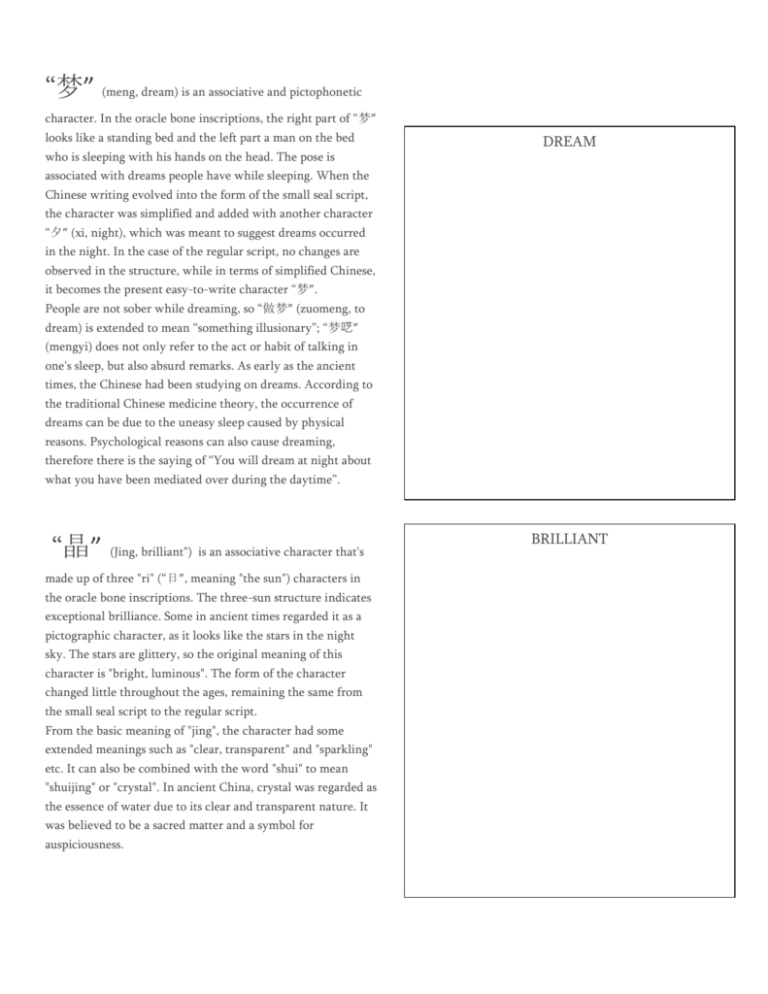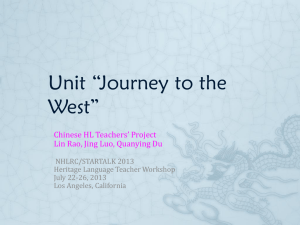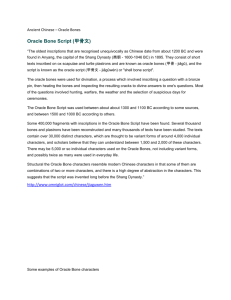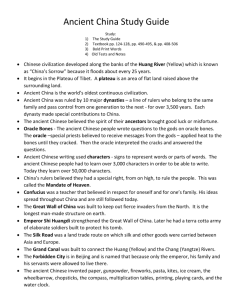File
advertisement

“梦” (meng, dream) is an associative and pictophonetic character. In the oracle bone inscriptions, the right part of “梦” looks like a standing bed and the left part a man on the bed DREAM who is sleeping with his hands on the head. The pose is associated with dreams people have while sleeping. When the Chinese writing evolved into the form of the small seal script, the character was simplified and added with another character “夕” (xi, night), which was meant to suggest dreams occurred in the night. In the case of the regular script, no changes are observed in the structure, while in terms of simplified Chinese, it becomes the present easy-to-write character “梦”. People are not sober while dreaming, so “做梦” (zuomeng, to dream) is extended to mean “something illusionary”; “梦呓” (mengyi) does not only refer to the act or habit of talking in one's sleep, but also absurd remarks. As early as the ancient times, the Chinese had been studying on dreams. According to the traditional Chinese medicine theory, the occurrence of dreams can be due to the uneasy sleep caused by physical reasons. Psychological reasons can also cause dreaming, therefore there is the saying of “You will dream at night about what you have been mediated over during the daytime”. “晶” (Jing, brilliant") is an associative character that's made up of three "ri" (“日”, meaning "the sun") characters in the oracle bone inscriptions. The three-sun structure indicates exceptional brilliance. Some in ancient times regarded it as a pictographic character, as it looks like the stars in the night sky. The stars are glittery, so the original meaning of this character is "bright, luminous". The form of the character changed little throughout the ages, remaining the same from the small seal script to the regular script. From the basic meaning of "jing", the character had some extended meanings such as "clear, transparent" and "sparkling" etc. It can also be combined with the word "shui" to mean "shuijing" or "crystal". In ancient China, crystal was regarded as the essence of water due to its clear and transparent nature. It was believed to be a sacred matter and a symbol for auspiciousness. BRILLIANT ”舞” (Wu, dance) is a pictographic character. In the oracle bone inscriptions, it looks like a front-facing person waving ox tails (ancient dance props) with both hands. The dancing posture presented in this character explains its original meaning - “dance”. In the bronze inscriptions, the image of hands holding ox tails is strengthened. In DANCE addition, a double person (“彳”) radical is added to the left bottom and a “zhi” (“止”, walk) radical to the right bottom, highlighting the role of human feet. In the small seal script, the character is simplified from its version in the bronze inscriptions, with two feet added to the dancing figure, strengthening the dancer's feet even more. This shape basically remains in the regular script. The character “wu” contains a lot of strokes. For Chinese beginners, understanding its structure and evolving process helps them write the character. Dancing is a happy thing to do, so the character had derivative meanings like “encouraging”, “inspiring” etc. The origin of ancient Chinese dances dates back to remote antiquity, before drums and musical instruments were invented. Our ancestors would strike one stone with another to beat time and hunters donning in animal skins, wearing plumes on the head and holding ox tails in both hands would dance to the strong rhythms and imitate flying birds and leaping beats. Their dances were bold and unrestrained, with great passion and vitality, showing the group strength unique to primitive tribes. Later, primitive dances were increasingly diversified and referred to as “music dances”, which were an art form combining music, poetry and dance. Well-known historical dances include Sword Dance, Dance of Rainbow Skirt and Feathered Dress, Huxuan Dance, Wave Dance and so on. In the oracle bone inscriptions, “力” (li, power) is a pictographic character. The curving top part means the plough handle and the bottom refers to the plough head, so it is a very simple symbol of an ancient farm tool and therefore the original meaning of this character is such a tool. As time goes by, this farm tool was then towed by ox instead of man. So the original meaning of “力” is replaced by “犁” (li, plough), and becomes a character carrying the meaning of “power”. The writing styles of small seal script and regular script are all derived from oracle bone inscriptions, in which a rough shape can still be noticed. “力” is also a radical complement in Chinese, and most of the characters comprising of it and other radicals have something to do with the meaning of “power” and “action”, like “努”(nu, exert). POWER BEAUTY “美” (Mei, beauty) is written as in oracle bone inscriptions, which resembles a man with two long decorative feathers on head. In small seal script, another form appears as , which consists of a “羊” (sheep) on a “大” (big). The two forms appear similar in strokes, however, with distinctly different stress. The former seems to indicate the impression of being decorated, while the latter emphasizes our impression on fat sheep. Finally the same meaning is indicated, that is, "beauty". The word in regular script was an evolvement from that in small seal script. In the oracle bone inscriptions, “you” ( 友) is like two hands reaching out toward the same direction, symbolizing giving help with both hands. So the meaning of “you” is “people with a common goal and having similar ideals and beliefs”. In the seal script, the character is also like two hands, with slight changes in the form. The “you” character in modern Chinese is derived from its earlier versions. Today, people sharing same hobbies are referred to as “you”, or “friends”, as in phrases like “piaoyou” (meaning “an amateur performer [of Beijing opera, etc.]), “chayou” (meaning “a friend you drink tea with”) etc. In ancient Chinese, “you” and “peng” (朋) had different meanings, with the former referring to “a friend” and the latter “a classmate”. In other words, those studying under the same teacher are classmates and those sharing the same interests are friends. The phrase “pengyou” (meaning “a friend”) in modern Chinese actually has the meaning of “you” only. FRIEND Jia (family) is a pictographic character. In the oracle bone inscriptions, the upper part of the character is a house and the lower one (豕) is another character for pig (猪) in Chinese. So it is obvious that the earliest FAMILY “家” was the house for the pig and later it became the residential place of the human beings, but the character retains its original form. That’s why even today we can still clearly see the character “家” with a pig (豕) under the roof of a house. Our Chinese attach great importance to “family” which bears profound connotations to us. Tender feeling for hometown and the country, the wanderer returning to his birthplace, all these sensibilities derived from the conception of “family” have become the strong nostalgic feeling for the motherland long cherished by our Chinese home and abroad. This affection has supported the Chinese nation all the way through the past several thousand years. Despite the numerous tribulations, the destitution and homelessness, and the wandering life in other places, we would always cherish our homebound affection, thus bringing up the constant prosperity of the ancient civilized China. DRAGON "Long" (Dragon) is a divine beast with a snake body in the ancient legends of China. The appearance of the character in the oracle bone inscriptions suggests that the legends of the dragon have a long history. In the oracle bone inscriptions, it is a pictographic word, the upper part of which is a head of a peculiar beast with long horns and a protruding big mouth, while the lower part looks like the coiling body of a snake. For the modern Chinese, the image of the dragon is more of a symbol, an emotion, and a tender feeling of the connection of flesh and blood. The titles such as "offspring of the dragon" and "descendants of the dragon" often arouse in us the feeling of excitement, aspiration and pride. The dragon culture has not only been inherited and spread in the vast territory of China, but also been brought to all the corners of the world by overseas Chinese.





